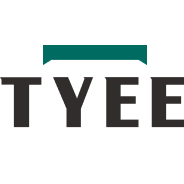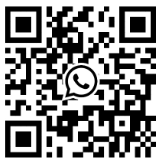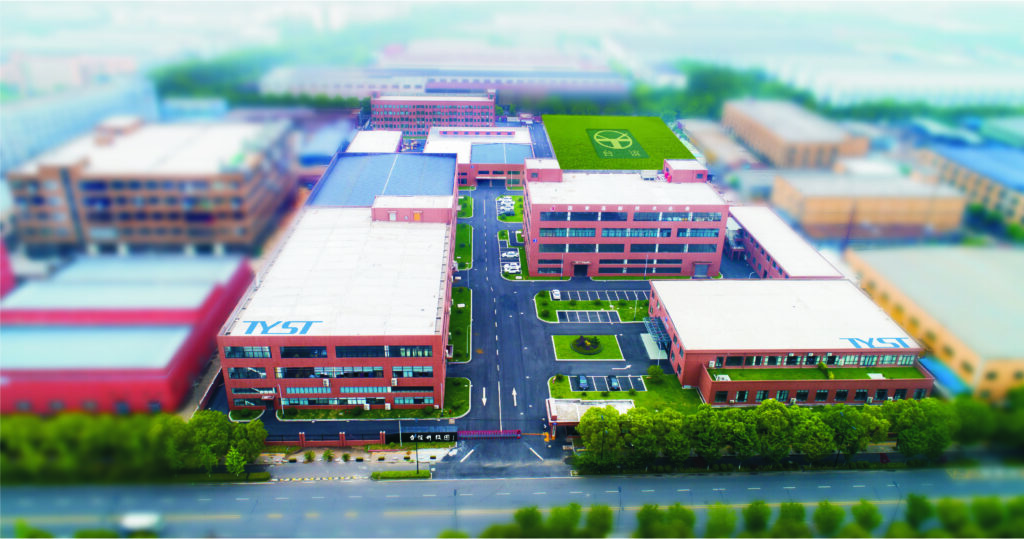
Given the presence of vulnerable patients, complex infrastructure, and critical medical equipment, fire safety is a top priority for healthcare facilities. Well-designed fire detection, alarm, and evacuation systems are essential to ensuring the safety of patients, staff, and visitors, while minimizing property damage and operational disruption. TYEE offers customized, high-efficiency fire detection and alarm solutions tailored to the specific requirements of different hospital areas—such as wards, outpatient lobbies, and restrooms—significantly enhancing fire protection across medical environments.
Key Takeaways
- Fire alarm systems are very important for keeping patients safe. They find fires early and help people leave quickly, especially those who can’t move easily.
- Checking and fixing fire alarm systems often is very important. Following rules makes sure they work well and keep everyone safe.
- Smart fire alarms make safety better with instant alerts and plans. Using these systems can help people respond faster in emergencies.
- Training staff is key to good fire safety. Practice drills and lessons help workers stay calm and act fast during emergencies.
- Special evacuation plans are needed for different patient needs. Making plans for everyone ensures all patients get help during a fire.
Importance of Fire Safety in Healthcare Facilities

Why Fire Safety is Vital in Medical Institutions
Fire safety is very important in healthcare places. Fires can stop medical care, harm patients, and put workers in danger. Hospitals and clinics often care for people who can’t leave on their own. Numbers show why fire safety matters. From 1998 to 2003, hospital fires went up by 10%, says the U.S. Office of the Deputy of Prime Ministers. In 2011, a fire at AMRI Hospitals in Kolkata killed 93 people because fire safety rules were not followed. These events show why strong fire alarm systems are needed to save lives and keep healthcare running.
Challenges in Ensuring Fire Safety in Healthcare
Hospitals face special problems with fire safety. Many people and patients who can’t move make leaving hard in emergencies. Overloaded electrical equipment causes 68% of hospital fires, says the National Fire Protection Association (NFPA). Storing flammable items wrong causes 15% of fire safety issues. Old buildings are risky too, with 42% of hospitals built before 1970 needing big fixes. Also, only 65% of healthcare workers get yearly fire safety training, leaving gaps in readiness. Fixing these problems needs fire safety plans made for hospitals’ special needs.
Regional Fire Safety Considerations: Middle East and Southeast Asia
Fire safety problems differ by region due to weather, buildings, and habits. In Southeast Asia, fires happened often from 2003 to 2016 in places like India, Pakistan, Indonesia, and Myanmar. Fires rose in Cambodia, India, and Vietnam because of weather like rain. In the Middle East, fast-growing cities and old hospitals make fire risks worse. Hospitals in these areas need special fire safety steps, like better fire alarms and emergency plans. Solving these local problems helps keep patients and workers safe.
Fire Detection and Alarm Systems
In healthcare facilities, the rapid identification of fire incidents is critical to ensuring swift emergency response and minimizing risk to life and infrastructure. A robust fire detection and alarm system should incorporate the following components:
- Thermal and smoke detection devices strategically deployed in high-risk zones such as patient wards, corridors, and critical equipment rooms to monitor environmental changes indicative of fire outbreaks.
- Auditory and visual signaling devices (e.g., horns, strobes) to deliver immediate, multi-sensory alerts to building occupants and on-site personnel.
- Integration with centralized emergency communication and control systems, enabling automated alerts and coordinated response protocols across the facility.
Smoke Detectors
Smoke detectors are the first tools to spot fires. They sense smoke in the air and warn about possible danger. In hospitals, these devices are very important. They give early alerts so staff can act fast to protect patients who can’t leave by themselves.
There are two kinds of smoke detectors: ionization and photoelectric. Ionization detectors are good at finding fast-burning fires. Photoelectric ones are better for slow, smoldering fires. Many hospitals use both types for better safety. Smoke detectors in hospitals are linked to alarm panels. These panels alert staff and emergency teams right away when smoke is found.
Tip: Keep smoke detectors clean and test them often. Dust can make them less sensitive, so regular care is important.
Addressable Heat Detactor
Heat detectors notice temperature changes that show a fire might be starting. Unlike smoke detectors, they react to heat, not smoke. This makes them useful in places like kitchens or boiler rooms where smoke might cause false alarms. In hospitals, heat detectors are great for protecting important areas like operating rooms or places with flammable items.
Heat detectors in hospitals are very accurate and reliable:
| Feature | Detail |
|---|---|
| Accuracy | ±0.05 °C @ 37 °C |
| Application | Used in patient care and special equipment like incubators |
| Importance | Finds unusual temperatures that could mean health problems |
| Use in Critical Care | Watches skin temperature to check for issues and treatment success |
| Role in Cardiac Care | Tracks body temperature during surgeries to avoid problems |
This accuracy helps heat sensors find dangerous temperature changes fast, keeping patients and staff safe.
Addressable Manual CallPoint
Addressable manual call points let people start the fire alarm system by hand. They are placed in easy-to-reach spots all over hospitals. This makes them simple to use during emergencies.
Following safety rules is key for pull stations to work well. Groups like OSHA and NFPA make rules for their setup and care. Following these rules saves lives and avoids fines.
| Compliance Aspect | Description |
|---|---|
| Regulatory Bodies | OSHA and NFPA set rules for pull station setup and care. |
| Importance of Compliance | Following rules saves lives and avoids fines. |
| Market Impact | Good compliance improves pull station use and emergency response. |
To keep them working, Manual CallPoint need regular checks and care. Companies like Pavion help hospitals inspect and stay ready.
Note: Manual CallPoint work best when staff knows how to use them. Training on when and how to pull them can save lives in a fire.
Alarm Panels
Alarm panels are the main control center for fire alarms. They gather signals from smoke detectors, heat sensors, and manual pull stations. Then, they send important alerts to hospital staff. These panels help staff act fast during fires, keeping everyone safe.
Modern alarm panels follow strict rules to work well. The IEC 60601-1-8 standard sets guidelines for alarms in healthcare. It organizes alarms by urgency—low, medium, and high. It also sets rules for sound levels and tones. These sounds must meet exact requirements to help staff respond quickly.
Key features of alarm panels include:
- Priority Classification: Alerts are ranked by importance to focus on urgent cases.
- Audible Warnings: Sounds are loud and clear to grab attention fast.
- Reliability: Panels are made to work well even in tough situations.
Tip: Test and maintain alarm panels often. This keeps them ready to work during emergencies.
Smart Fire Alarm Systems and Integration

Benefits of Smart Fire Alarm Systems in Healthcare
Smart fire alarms make healthcare facilities safer. They find fires faster than older systems. These alarms show the exact fire location, helping staff act quickly.
Automated plans guide people to safe exits during fires. This reduces confusion and makes evacuations smoother. These systems also alert emergency services instantly. Faster help saves lives and protects important areas like operating rooms.
Tip: Upgrade to smart fire alarms for better safety and planning.
Integration with Building Management Systems
Smart fire alarms work well with building management systems. This connection helps monitor fire safety everywhere in the building.
Building management systems give centralized control. You can manage alarms, sprinklers, and lights from one place. This makes handling emergencies easier and more organized.
Real-Time Monitoring and Emergency Alerts
Real-time monitoring keeps you updated during emergencies. Smart alarms send instant alerts to staff, responders, and patient families. These alerts show where the fire is and how bad it is.
Callout: Real-time monitoring helps protect patients and staff while keeping operations running.
Maintenance and Testing for Reliability
Regular Inspections and Compliance Standards
Regular checks keep fire safety systems working well in hospitals. These checks make sure alarms and sprinklers protect everyone from danger. Following rules from groups like the Joint Commission and local authorities is very important.
| Compliance Requirement | Description |
|---|---|
| Joint Commission Standards | Hospitals must follow rules from the Joint Commission, which require regular system checks. |
| Local AHJ Standards | Local authorities set extra rules, often based on NFPA codes. |
| Inspection Frequency | Systems must be checked weekly, monthly, quarterly, or yearly. |
| Identifying Hazards | Inspections find fire risks before they become problems. |
| Ensuring Compliance | Checks make sure hospitals follow fire safety laws and avoid penalties. |
| Enhancing Safety | Regular checks improve safety and help during emergencies. |
By following these steps, hospitals can keep fire alarms reliable and meet safety rules.
Addressing System Failures and Upgrades
Fixing broken systems quickly is key to staying safe. Electrical problems, like short circuits or old wires, often cause fires. Overloaded equipment is another common issue. A study in Peru found that 57% of hospital fires were caused by bad electrical use.
Upgrading old systems helps prevent these problems. New alarms faster and better. Regular fixes and updates keep hospitals ready for emergencies.
Ensuring Long-Term Reliability of Fire Alarm Systems
To keep alarms working for years, regular care is needed. Check smoke detectors, heat sensors, and alarm panels often. Replace old parts and update software to keep everything running smoothly.
Training staff is also important. Workers who know what to do can act fast in emergencies. This keeps patients safe and helps evacuations go smoothly. A well-cared-for alarm system saves lives and keeps healthcare running without problems.
Tip: Review your fire safety plan often to handle new challenges and needs.
Emergency Preparedness and Evacuation in Healthcare
Patient Safety During Emergency Evacuations
Keeping patients safe during a fire is most important. Many patients can’t move easily or need constant medical care. Emergency plans must focus on these special needs to avoid harm. For example, moving patients in stages, starting near the fire, helps. This step-by-step method reduces panic and makes evacuations smoother.
Special tools can also help during evacuations. Items like evacuation chairs or stretchers are useful for patients who can’t walk. Clear communication is just as important. Use voice alarms or signs to guide everyone to safety. These tools help patients and staff know what to do, even in stressful moments.
Tip: Check and update your evacuation plans often to handle new challenges or patient needs.
Staff Training and Emergency Preparedness
Trained staff are key to handling emergencies well. Training gives them the skills and confidence to act quickly during fires. Studies show that training improves readiness. For example, research found a strong link between training and confidence in disaster response (c²=16.83, p=0.002). This proves why regular drills and lessons are so important.
Good training programs include:
- Learning Fire Safety: Teach staff about fire rules and evacuation steps.
- Practice Drills: Run practice sessions to prepare for real emergencies.
- Team Roles: Assign jobs to staff for better teamwork during fires.
In Los Angeles, hospitals with strong training programs handled disasters better. By teaching your staff, you make the hospital safer for everyone.
Callout: Plan training every three months to keep staff ready for emergencies.
Tailored Evacuation Plans for Diverse Patient Needs
Hospitals care for many types of patients with different needs. Special evacuation plans make sure everyone stays safe during a fire. Start by asking for feedback. Surveys and meetings with patients, families, and staff can help you learn what they need.
Cultural training is also important. Teach staff to respect and understand different backgrounds. This helps them communicate better during emergencies. Use simple words, translations, or pictures to make sure everyone understands.
For patients with extra needs, create specific plans. For example, people with disabilities may need extra help or special tools. Patients using life-saving machines like ventilators need plans to keep their care going during evacuations.
Note: Custom evacuation plans improve safety and build trust with your community.
Fire alarm systems are crucial in keeping healthcare facilities safe. They help by spotting fires early and allowing quick action. Regular checks keep these systems dependable, and smart features improve safety. Training staff helps them stay calm and act fast during emergencies, protecting lives.
TYEE Fire provides custom fire safety solutions for hospitals and clinics. They offer advanced alarms, easy monitoring, and patient-friendly evacuation plans. Working with TYEE Fire helps protect your facility and focus on patient safety.
Callout: Reach out to TYEE Fire now for personalized fire safety plans for your healthcare facility.
FAQ
Why are fire alarm systems important in hospitals?
Fire alarm systems keep patients, staff, and equipment safe by spotting fires early. They send alerts to help with quick evacuations and emergency actions. In hospitals, many patients can’t move alone, so these systems are vital for safety and reducing harm.
How often should hospital fire alarms be checked?
Fire alarms need regular checks to stay reliable. Experts suggest inspecting them weekly, monthly, quarterly, or yearly. These checks find problems early and ensure the hospital follows safety rules, keeping everyone ready for emergencies.
Can fire alarms connect to other hospital systems?
Yes, modern fire alarms can link with building systems. This connection lets you control alarms, sprinklers, and air systems from one place.
What are the advantages of smart fire alarms in hospitals?
Smart fire alarms find fires faster and show exact locations. They create automatic evacuation plans, reduce confusion, and alert emergency teams quickly. These features help protect important areas and keep patients safe during emergencies.
How does staff training help with fire safety?
Training teaches staff how to act fast during fires. It covers fire rules, evacuation steps, and teamwork. Regular practice makes sure everyone knows their jobs, lowers panic, and keeps patients safe during emergencies.
Tip: Plan fire safety training every three months to keep your team ready.









